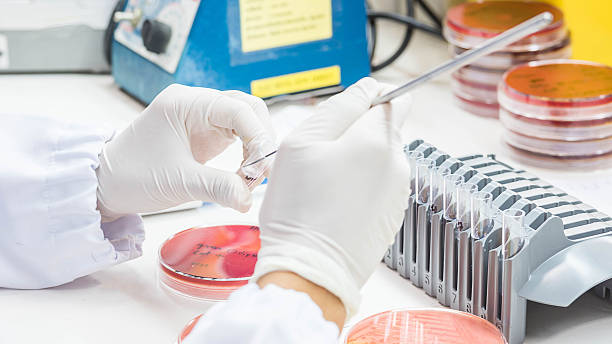Reimagining Glucose for a Changing World
Walking through a supermarket, I realize few people think about where the glucose in their food or drink comes from. This simple sugar serves as the backbone of so much—energy for our bodies, sweetness for our foods, raw material for hundreds of everyday products. Now, with pressure building around climate change and resource scarcity, biotech companies have turned their focus from old-school methods to sustainable fermentation. Glucose made this way doesn't just tick a box for greener choices; it reshapes how we think about industrial chemistry, agriculture, and food security. Fossil-fuel based chemistry may have delivered cheap inputs, but the cost to watersheds, soils, and air stretches further than anyone wants to admit. Today’s life science leaders place real bets on fermentation, aiming to cut back on energy waste and agricultural overuse.
Turning to Fermentation: Less Waste, Better Yields
I remember talking with a fermentation engineer last year who joked that their lab “smelled like baking bread more than making chemicals.” Microbes eat plant residues, then convert them to high-purity glucose in sleek stainless steel tanks. This offers an answer to conventional corn or cassava starch processing, which guzzles water, demands fertilizer, and demands sprawling farms. A green fermentation setup runs on second-generation feedstocks—think straw, husks, sawdust—leaving first-rate fields free for food. According to data from the International Energy Agency, modern bioprocesses can drive down greenhouse gas emissions by at least 70% over common refinery operations. It’s no longer a niche experiment. Major names pour hundreds of millions into building these platforms. The savings spill beyond energy, since these technologies slash chemical runoff that has plagued farm communities for generations; families living near old sugar mills finally get relief from polluted rivers.
Chasing Consistency and Scale without the Drawbacks
Back in the early days, I worked alongside process chemists who struggled to get the same syrup out of every tonne of corn. Nature loves to keep things unpredictable—one field gives plenty, the next slumps. Fermentation answers this with remarkable reliability, largely unaffected by weather or local blights. Of course, scaling up biotech brings headaches most people outside the field rarely see. Microbial strains must work hard in inhospitable tanks, and the investment demands run high. Leading companies with experience in genomics and synthetic biology hack cell pathways to pump out glucose with fewer byproducts. Teams compete to see who can build the most robust system, since even a single-point failure—contamination, a runaway reaction—can wipe out weeks of work. The drive for better processes pushes job training in science and engineering, since hands-on know-how means being able to tweak parameters and catch problems on the fly. In a world where supply shocks hit suddenly, robust fermentation offers an insurance policy against swings in global trade.
Balancing Environmental Impact and Social Good
Every player in this field talks up their emissions savings and water use cuts, but the real winner comes back to the communities that live around production. My time in regions hit by soil depletion reveals one point—the land can’t bounce back unless the cycle of extraction slows down. Fermentation-driven glucose production puts real pressure off farmland. No need to raze forests for more sugarcane or flood plains for monocultures that starve out pollinators. Farmers can supply residues that used to rot away, now transformed into high-value ingredients. A field once left fallow or burned for land clearing delivers income instead, while ecosystems heal. UNICEF reports that communities in high-intensity farming zones face increased risks from chemical exposure and malnutrition. Sustainable glucose plants often bring jobs with longer training, better wages, and safer conditions. Turning attention to the people who live near these new biorefineries provides more than lip service—it’s about investing in the wellbeing of the next generation.
Pushing Past Skepticism: The Role of Transparency
Many consumers still distrust anything made by a microbe or bioreactor, lumping all bioengineered products with the worst-case scenarios of manipulated food systems. Honest communication matters. Companies in this space publish lifecycle data, open doors to independent audits, and involve external experts to verify sustainability claims. I’ve seen activists walk plant floors, notebook in hand, pressing for proof that savings aren’t just shuffled from one metric to another. The highest standards call for full traceability—from feedstock sourcing through final product packaging—so that benefits don’t disappear into greenwashing. Efforts to build real trust connect consumer choices with impact on land, water, and climate. This open approach matches guidelines promoted by food safety and sustainability certification agencies, confirming that the promise of better glucose holds up under scrutiny.
What the Future Could Hold
Even the best fermentation processes can stumble if supply chains grow too dependent on single crops or narrow microbe strains. I expect diversity and flexibility will matter most. Research teams now experiment with wild-type microbes from harsh environments, searching for organisms that thrive on many types of waste. If a fermentation tank can run on anything from forestry chips to brewery mash, then glucose production can adapt when one supply dries up. Local production could cut the distance glucose travels from plant to end user, shrinking the logistics-driven carbon footprint. Governments and private investors tap into this shift, seeing sustainable glucose as a template for other industries—plastics, flavorings, even pharmaceuticals. Everyone—from shoppers to nutritionists, smallholders to lab managers—wants systems that don’t take more than they return. Looking back on my own time in the lab, moving from raw starch hydrolysis to closed-loop bioreactors felt like seeing the world shift from black-and-white to color. This leap in technology might finally bridge the gap between what’s good for business, healthy for communities, and necessary for the planet.



